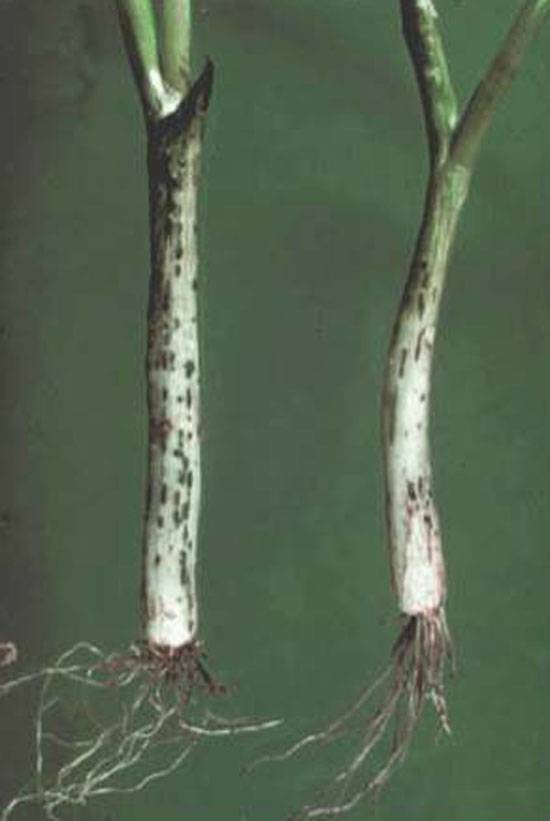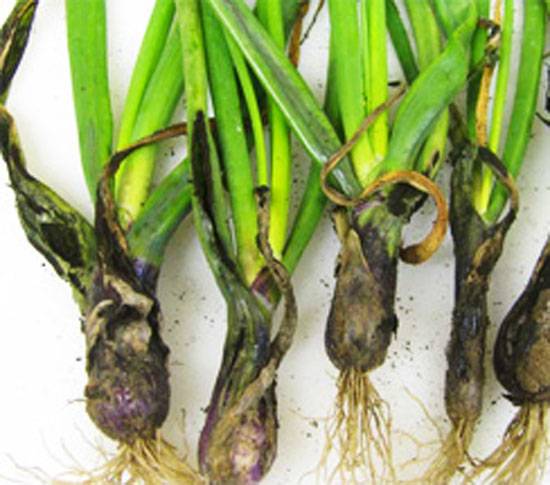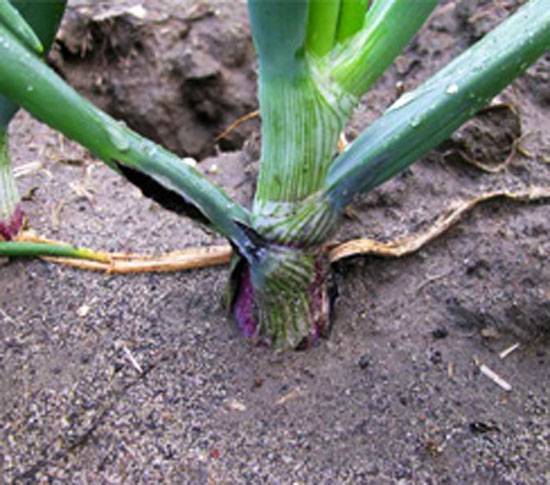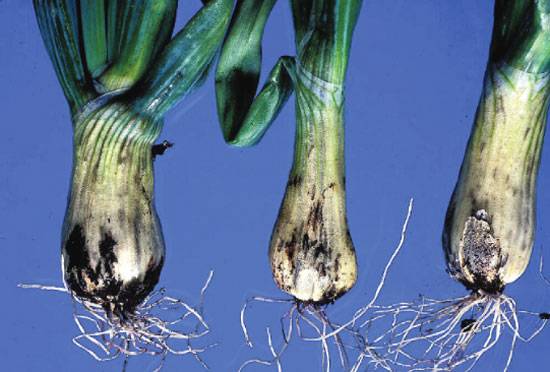Onion
Smut

Urocystis colchici
Fungal Disease

Urocystis colchici
Fungal Disease

Urocystis colchici
Fungal Disease

Urocystis colchici
Fungal Disease

Urocystis colchici
Fungal Disease
Onion smut, caused by the fungi Urocystis magica (synonym: U. cepulae) and U. colchici, is one of the most destructive diseases affecting onion crops. It is a soilborne disease that primarily targets young seedlings, leading to stunted growth, deformity, and in severe cases, death.
Symptoms of Onion Smut
The first signs of onion smut appear on the cotyledonary leaf—the first leaf to emerge from the soil. Dark, lead-colored, slightly thickened spots and streaks form on the cotyledon and later on the developing leaves and scales of the onion. These lead-colored to black streaks cause the leaves to swell abnormally, bend, or twist downward, distorting the plant.
As the disease progresses, elongated black blisters form on the outer scales of the developing bulb. These blisters often split open, revealing dark brown to black, powdery smut spores. Infected plants may survive in a weakened condition until mid-season or harvest, but they often dry up and die within a month of seedling emergence.
Even in slightly affected bulbs, dark brown to black pustules may appear on the outer fleshy scales, sometimes reaching as deep as the third or fourth scale of the bulb.
Disease Spread
The fungi that cause onion smut are primarily spread through infested bulbs, sets, and soil. The spores can be transmitted via surface drainage water, wind-blown soil, farm tools, equipment, and even by humans and animals walking through the fields. While smut spores have occasionally been found on onion seeds, this method of transmission is not significant. Diseased onion sets are the most common means of long-distance spread.
The black, powdery masses of smut spores are highly resistant to environmental changes and can survive in the soil for many years, even in the absence of a host crop.
Infection and Conditions
Onion smut only infects young seedlings during a vulnerable period—from two to three days after germination until the seedling reaches about three inches tall, a period lasting 10 to 21 days. If the seedling escapes infection during this time, it is no longer susceptible, even in heavily infested soil.
Infection typically occurs when soil temperatures range between 10°C to 25°C, with an optimum range of 16°C to 22°C. However, if the soil temperature reaches 28°C or higher, no infection occurs, and the seedlings tend to outgrow the disease.
Management Strategies
The key to managing onion smut is to prevent the spread of the smut spores by using disease-free sets and ensuring proper field hygiene. Crop rotation, removal of infected plant debris, and maintaining soil temperatures can also help reduce the risk of infection. By implementing these strategies, farmers can protect their onion crops from this devastating disease.




